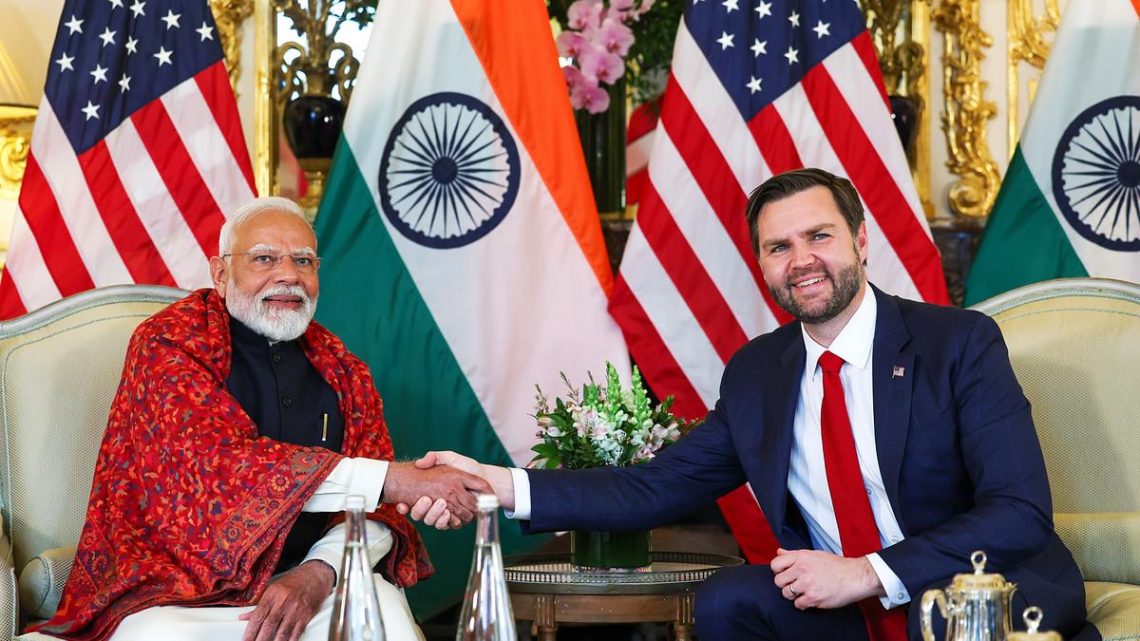Prime Minister Narendra Modi and US Vice President JD Vance met in Paris on the sidelines of the AI Action Summit and held discussions on boosting cooperation in nuclear technology, with the US investing in India to meet clean energy needs.
Their meeting was focused on diversifying India’s energy sources, with an emphasis on US support for India’s clean energy initiatives and nuclear technology.
“US Vice President JD Vance meets Prime Minister Narendra Modi. The two leaders, along with the Second Lady of the United States, Usha Vance, enjoyed coffee together and discussed topics of mutual interest, including how the United States can assist India in diversifying its energy sourcing through investments in clean, reliable US nuclear technology. Prime Minister Modi graciously shared gifts with the Vance children and wished the Vice President’s son, Vivek, a happy birthday,” the White House said in a statement.
Before PM Modi’s visit, the government announced plans to amend the Civil Liability for Nuclear Damage Act and the Atomic Energy Act.
After concluding the AI Summit in France, Modi will embark on his journey to the United States, where he is set to meet US President Donald Trump.
In the scheduled meeting between the two leaders, topics such as trade, investment, technology, and immigration are expected to be discussed. Both Trump and Modi had close relations during his first term in the White House.
PM Modi also met Vice President Vance’s family, including his wife Usha and their sons Ewan and Vivek. PM Modi, in a post on X, thanked the Vance family for making him a part of Vivek’s birthday celebrations. Meanwhile, JD Vance said that his children loved the gifts they received from PM Modi.
The AI Summit was co-chaired by PM Modi and French President Emmanuel Macron. The AI action Summit was attended by global leaders, industry experts, and policymakers to discuss the future of artificial intelligence.
Link to article –
After Modi meets Vance, White House offers ‘investments in clean, reliable US nuclear technology’
